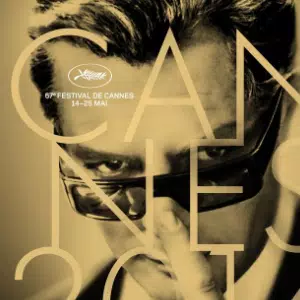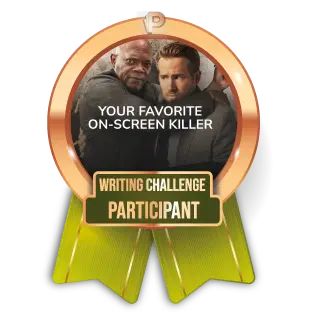
Al Pacino is arguably the most revered living actor in the world. While his friend and nemesis, Robert De Niro, has been caught in the whirlwind of controversy with his anti-Trump rants, Pacino has remained focused on his craft. From The Irishman, Once Upon a Time in Hollywood, and House of Gucci to upcoming projects like Lear Rex (co-starring Jessica Chastain, Rachel Brosnahan, and LaKeith Stanfield) and Hand of Dante (with Oscar Isaac and Gal Gadot), the 84-year-old legend shows no signs of slowing down.
In between these projects, Pacino has even found the time to write a memoir! Titled Sonny Boy, the book was released in October and has become a global bestseller, packed with revelations. Despite his more than 50 years as a Hollywood icon, Pacino’s autobiography proves there’s still much we don’t know about the man. It’s also a testament to how even the greatest actors have faced their fair share of struggles.
Here are four surprising things Sonny Boy reveals about the man behind Michael Corleone and Tony Montana:

1. Pacino nearly died of COVID
During the pandemic, Pacino stayed active, with House of Gucci being one of the few star-studded Hollywood releases during that time. Yet few people knew that a year before the film premiered, Pacino nearly died after contracting COVID-19. According to his memoir, during the contraction, he struggled to breathe, and his pulse even stopped momentarily. His doctors and loved ones were prepared for the worst.
When he regained consciousness, he found himself surrounded by medical staff clad in what looked like alien suits or firefighter gear. Pacino eventually recovered but described the experience as a rare glimpse into the other side:
“There was no light at the end of the tunnel, just darkness. Like Hamlet said, ‘No more.’”
This near-death experience may have motivated Pacino to finally tell his life story. However, he insists it didn’t fundamentally change his outlook on life.

2. Pacino survived a drug-ridden environment
Pacino was born and raised in New York’s South Bronx. During the 1940s and ’50s, the area was rife with crimes, violence and drugs. Many of his teenage friends succumbed to heroin addiction and died young. Pacino credits his strict mother, Rose Gerard Pacino, for saving him from the same fate.
Though she struggled with severe depression, Pacino’s mother maintained a firm grip on her son's upbringing. Pacino often reflects on his youth with gratitude for her influence.

Ironically, Pacino went on to star in some of cinema’s most iconic drug-related films. In The Panic in Needle Park, he played a heroin addict from South Bronx who drags his girlfriend into addiction. In Scarface, he portrayed one of film history’s most infamous cocaine kingpins, a character who famously “gets high on his own supply.”
Pacino says he never touched hard drugs but drew on his personal-witnessed experiences to authentically portray addiction. His tumultuous early years gave him the insight to depict both the allure and devastation of drug culture without falling prey to it himself.

3. We were almost left without the iconic “Say goodnight to the bad guy” scene
Tony Montana in Scarface is perhaps the most iconic character in Pacino's iconic career. Tony’s appeal lies in his brutal honesty, which starkly contrasts with the hypocrisy of those around him. This trait is showcased brilliantly in the high-class restaurant scene where a drunk Tony delivers a fiery monologue, calling out the so-called civilized people dining around him.
This pivotal moment almost didn’t happen due to budget constraints. Universal Pictures, worried about cost overruns, proposed moving the scene to Tony’s usual haunt, the Babylon Club—a seedy nightclub frequented by criminals. Producer Martin Bregman and director Brian De Palma agreed to the compromise.

When Pacino found out about this situation, he protested vehemently, arguing that the script demanded the contrast between Tony and the elite dining environment. Without it, the scene would lose its tension and impact.
Pacino’s 45-minute argument with Bregman and De Palma ultimately convinced them, though not without backlash. “This is going to cause trouble,” they warned. Pacino replied, “I’m always in trouble, guys. Whether I do this or I don’t, I’m in trouble. But what are we supposed to do?”
The scene was eventually filmed for an additional $200,000, becoming one of Scarface’s most memorable moments. Though it earned Pacino a reputation for being difficult, he remains unapologetic: “I was doing what was right for the film, even if the studio never forgave me for it.”

4. Pacino lost his entire fortune in 2011
Although Pacino was never a box office juggernaut like Tom Cruise or Tom Hanks, his steady output of acclaimed films—Heat, The Devil’s Advocate, Any Given Sunday—made him a fairly wealthy man.
However, in 2011, Pacino faced a financial disaster. His reckless spending habits, coupled with his manager’s embezzlement, left him completely broke. At 71, he was left with nothing but his real estate holdings.
“What could I do?” he reflects. “I never acted for the money. But when I had to, I went all in.”
Pacino’s first post-bankruptcy film was Jack and Jill, a widely panned Adam Sandler comedy. Despite the criticism, the paycheck helped him recover, and he struck up a friendship with Sandler, calling him a “great actor and a hell of a guy.”
Over the next decade, Pacino took on several less-than-stellar roles, though he maintained some standards: “If I’m doing a film, let’s at least get it to a C-, not an F+. Let’s make sure it’s not something that lands me in film jail.”

Pacino also began hosting seminars at universities and abroad to make ends meet. These seminars were surprisingly popular and covered his living expenses: “The audience would ask very interesting questions, and I found I enjoyed talking about the past. These seminars paid me well—if I did one a month, I got through the month. It was a way to earn a living.”
These are just four highlights from Sonny Boy, but the memoir is packed with even more fascinating revelations. To discover the full story of this legendary actor, pick up the hardcover, e-book, or audiobook narrated by Pacino himself. It’s a candid, compelling read that no fan of cinema or acting should miss.






Share your thoughts!
Be the first to start the conversation.